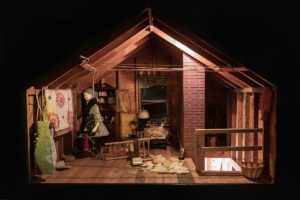On the email dollmaking list, we decided we wanted to kick off the new website with a sculpt-a-long! The theme is Storybook; the doll can include books in some way, or can be a character from one of your favorite stories. You can use any medium you wish — cloth, new clay, porcelain, resins, wood, or anything else you can think of. The goal is simply to play along, jumpstart our creativity, and motivate us to finish a project. We are giving ourselves plenty of time to finish this project, with a lot of checkpoints along the way. Don’t worry, we will also have challenges along the way with shorter timelines for those of us with shorter attention spans!
We are going to break this project down into sections with deadlines, with time scheduled for each section of work. On the deadline, I will make a post, and the participants can upload pictures of their work in progress. At the end, I will pick some winners from the ones who managed to stay with us throughout the whole process, and they will win a dollmaking book.
Here is the deadline schedule:
Feb. 18 2018: idea and sketches. Post your sketches and get feedback on what you are thinking. Play with the pose or with the costume on paper before you put a lot of time into writing. Maybe post some links to pictures that inspire you. Recommend your favorite book you are taking the character from.
March 4 2018: beginning. For the sculptors, the first step will probably be the armature. For the cloth doll makers, it might be drafting, adapting, or finding the appropriate pattern. Post a picture or drop a line by the deadline to show how it is going.
March 18, 2018: the head. The head is arguably the most important part of the doll. The expression on the face can make or break what you are working on. Got some tips or want advice on some challenges? Let us know.
April 2, 2018: Hands. Expressive hands are one of the biggest challenges in creating an art doll.
April 15, 2018: Body. Now that you’ve got the pieces sculpted, it’s time to start putting them together.
May 6, 2018: Costume. Clothes, shoes, and wigs. We’ve got an extra week on this one because there’s a lot here.
May 20, 2018: Finishing. Props? Base? Any other final touches your piece needs, or something you want to revisit from the previous sections. This is your opportunity to catch up if you have fallen behind along the way. Post your finished piece by May 20th.

